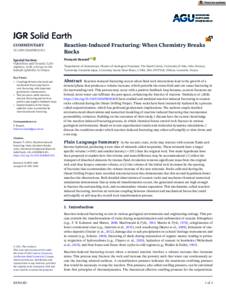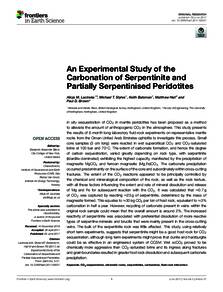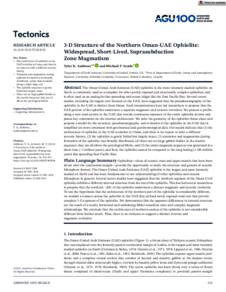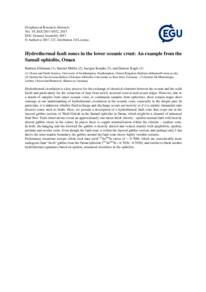Document
Reaction-induced fracturing : when chemistry breaks rocks.
Identifier
DOI: 10.1029/2020JB021451
Source
Journal of Geophysical Research: Solid Earth. v, 126, 2, e2020JB021451
Country
United Kingdom.
City
Oxford
Publisher
Blackwell Publishing Ltd.
Gregorian
2021-02-01
Language
English
Subject
English abstract
Reaction-induced fracturing occurs when fluid-rock interactions lead to the growth of a mineral phase that produces a volume increase, which perturbs the stress field and can cause fracturing in the surrounding rock. This process may occur with a positive feedback loop because, as more fractures are formed, more water can infiltrate the pore space, enhancing the kinetics of reaction. Yoshida et al. (2020, https://doi.org/10.1029/2020JB020268) have studied and modeled reaction-induced fracturing in oceanic rocks collected during the Oman Drilling Project. These rocks have been intensively hydrated by a process called serpentinization, which has profound geodynamic implications. The authors couple detailed microstructural observations and numerical modeling of reaction-induced fracturing that incorporates permeability evolution. Building on the outcomes of their study, I discuss here the current knowledge of the reaction-induced fracturing process, in which chemical forces control rock fracture in various geological environments. Based on recent experimental results and molecular dynamics simulations, I discuss the conditions under which reaction-induced fracturing may either self-amplify or slow down and even stop.
ISSN
2169-9313
Category
Journal articles




